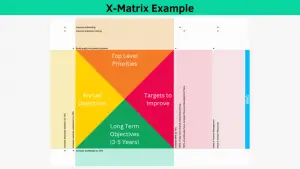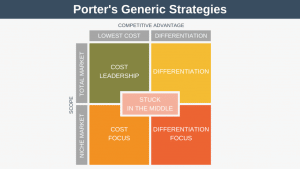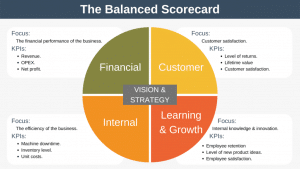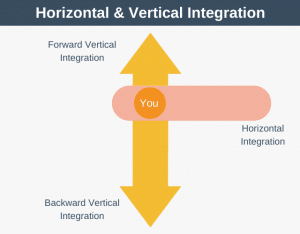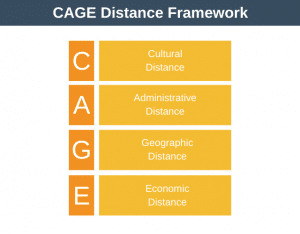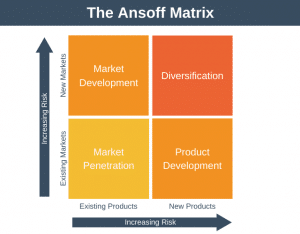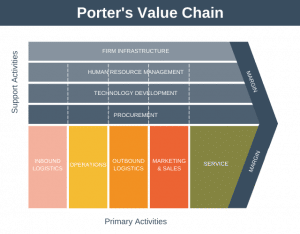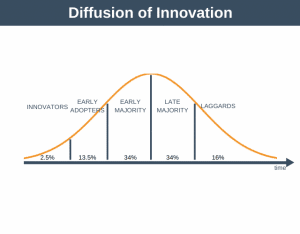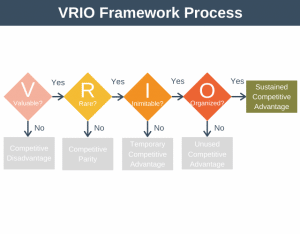A Strategy Diamond provides a simple way to show how the different parts of an organization’s strategy fit together.
The word ‘strategy’ is very often misused. Because of this, let’s spend a few moments making sure we understanding what exactly strategy means. You may have heard that:
- Dell’s strategy is, “to sell directly to consumers.“
- Or that many service businesses have an acquisition strategy.
What’s interesting about these strategies is that they are not actually strategies. Rather, they are components of a strategy. The word strategy comes from the Greek strategos, which means “the General’s art.” In essence, strategy is the orchestration of the whole to achieve a goal, which in the case of a general is to win the war.
The following diagram can help make strategy easier to understand. It shows how strategy fits within the organization and shows the inputs to it and outputs from it.
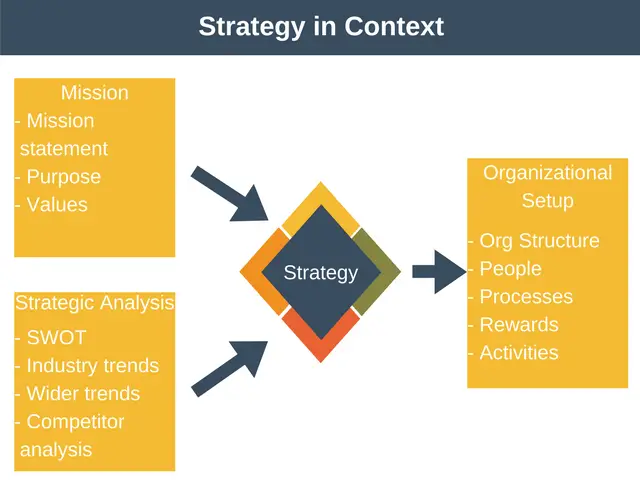
The Strategy Diamond
Donald Hambrick and James Fredrickson created the Strategy Diamond in 2001. It provides a concise way to show how the parts of an organization’s strategy fit together. There are many models available for executives to use to craft a strategy. But very few of these models specify what ingredients should be included.
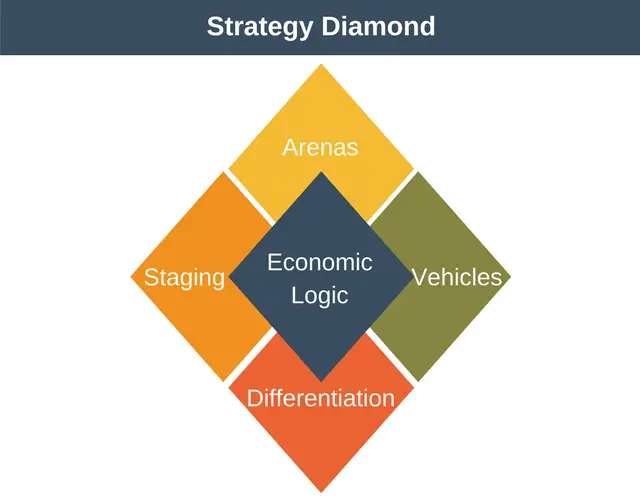
This is where The Strategy Diamond comes in. It acts as a checklist to ensure you have a good strategy. The model states that you’ll have a good strategy if you can answer these five questions:
- Where will we be active? (Arenas)
- How will we get there? (Vehicles)
- How will we win in the marketplace? (Differentiators)
- What will be our speed and sequence of moves? (Sequencing)
- How will we make our returns? (Economic logic)
By being able to answer all these questions we will know we’ve formed a complete strategy. Further, to go from having a strategy to having a great strategy, then each of the areas must reinforce and support each other.
Tip
The Strategy Diamond doesn’t only apply to the very top of an organization. It can apply at all levels of an organization. The executive board completes a Strategy Diamond for the whole organization.
A business unit could then take this strategy, and use it to create their own strategy. This strategy would appropriate for them but reference the original strategy.
The company can repeat this at every level of the organization. In this way the strategy cascades throughout the organization, forming an integrated strategy at all levels of the organization. In fact, the beauty of the Strategy Diamond is that it can apply whether you work for a company with 100,000 employees or 1 solo employee.
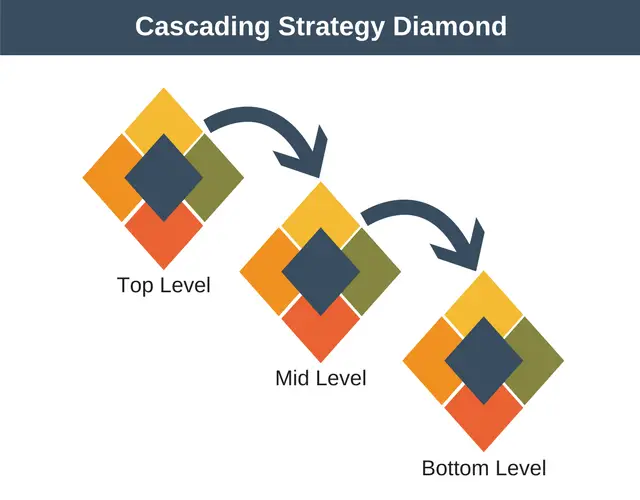
The 5 Elements of Strategy
By walking through the 5 questions of the Strategy Diamond, we create a better strategy. When we answer all 5 of the questions we’ll be able to see if our strategy forms an integrated whole. From this, we’ll be able to see where our strategy requires further work or where it needs to be redone.
1. Arenas
The first question of the Strategy Diamond an organization must answer is, “where will we be active?”. The mistake organizations often make here is to be very generic, for example, saying, “we want to be the number 1 consulting firm.”. But this is more a vision statement than a strategy. To avoid this trap, it is important to be very specific when describing arenas. You can do this by answering the following questions:
- Which product categories will we compete in?
- Which channels will we use?
- Which market segments will we target?
- Which geographic areas should we target?
- Which core technologies will we use?
- Which value-creation stages will we emphasize?
When specifying these arenas it is important to emphasize their importance. For example, suppose your strategy is to focus on a single geography. You also sell in other geographies. But you do this because it’s logistically easy, your core strategy is to focus on one market.
2. Vehicles
Now you know the arena in which you are going to compete, you must specify how you are going to get there. Here we determine what vehicle we will use to get from where we are to where we want to be. Example answers include:
- Joint ventures
- Acquisitions
- Licensing
- Partnerships
- Franchising
- Build in-house
Again, be as specific as you can. Suppose you identified you want to enter a new product category. You should specify whether you’ll buy this capability or build it in-house. Don’t make this decision on an ad-hoc basis. Instead, look to build up a logical strategy. If you’ve only ever built in-house, then be honest, admit acquisition isn’t right for you.
3. Differentiators
How are you different from the competition? What are the USPs (Unique Selling Propositions) of your products? What is it about what you do that will enable you to win in the marketplace?
Differentiation must be at the core of your strategy. If you can’t find a way to differentiate yourself, then how can you win? You can’t.
Some common methods of differentiation include:
- Price
- Quality
- Customisation
- Reliability and durability
- Speed to market
- Speed of product updates
- Customer service
It is important to determine your differentiators as soon as you can. The reason for this is that differentiation doesn’t happen by magic. If you want the best customer service you will have to spend time and money building that capability. Likewise, if you want the best-designed product, you’ll need to invest in that capability also.
4. Staging
In the first three steps, we determined what we want to do. In this step we’ll determine the moves we’ll make to get there.
Going back to our general for a moment. When a general is fighting a war they don’t advance all armies on all fronts at the same time. Instead, some advance first, followed by others, and then others. As in war, staging is important in business. There are many stories of companies that expanded too fast, before they were ready. Most of these companies are no longer around.
Your strategy needs to progress from one step to the next. Otherwise, you risk getting ahead of yourself. You risk taking on more than you can manage. You risk going out of business.
Key questions to ask during this step are:
- What sequence of steps should we take?
- At what speed should we take these steps?
5. Economic Logic
The final part of the diamond pulls everything together with one aim, profit.
In a nutshell, this section comes down to competing on a low cost or high cost basis. You might compete on low cost because you have economies of scale. Or because you have lower replication costs. You might compete on high cost because you have great design or unique product features.
Let’s look at two examples of economic logic to make this clear:
- Low cost: Ryanair can transport customers at a lower cost per mile than any other airline in Europe.
- High cost: Apple can charge higher prices because their customers are willing to pay more for their unique design.
To have a great strategy the five parts of the diamond must not only align, they must reinforce each other. Let’s look at an example to make this clearer.
Strategy Diamond Example
Let’s look at the strategy of Ikea. Ikea offers inexpensive, Scandinavian designed furniture, through its retail stores. As you’re aware most of the furniture requires home assembly.
The elements of their strategy diamond are below:
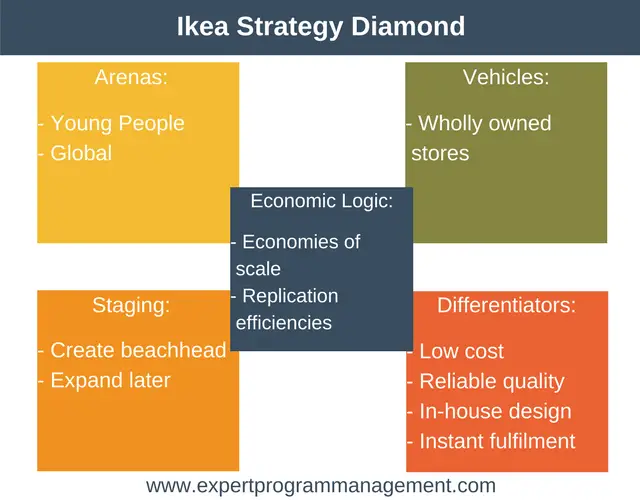
As you can see, Ikea’s arena is young people to whom they sell inexpensive furniture. Their vehicle is wholly owned stores. Their differentiators are low price, reliable quality, in-house design, and instant fulfillment. Reliable quality applies not only to the furniture itself but also the stores, which have a common experience. Their staging involves an early beachhead in each country, expanding later. Finally, their economic logic comes from economies of scale and replication efficiencies.
This is very unlike traditional furniture retailers who sell already assembled furniture. Their furniture is also expensive and fulfillment is usually slow.
What makes Ikea’s strategy special is the way each element reinforces each other. For example, their target market of young people is aligned to their low price differentiator. Also, their reliable quality shopping experience aligns with wholly owned stores. It would be impossible to achieve this experience if they were in partnership.
Strategy Diamond Summary
A Strategy Diamond provides a simple way to show how the different parts of an organization’s strategy fit together. It is a checklist of the things you must have to have a complete strategy.
The five parts of the Strategy Diamond are:
- Where will we be active? (Arenas)
- How will we get there? (Vehicles)
- How will we win in the marketplace? (Differentiators)
- What will be our speed and sequence of moves? (Sequencing)
- How will we make our returns? (Economic logic)
To have a great strategy all parts of the diamond must support and reinforce each other.
